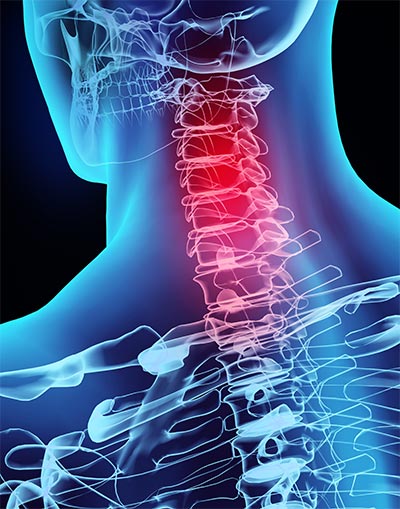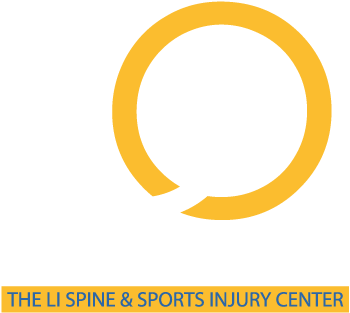Whiplash Injuries and Chiropractic Care
What is Whiplash?
An injury that is caused by a jolt or a quick jerk to the head is considered a whiplash. This typically happens in a motor vehicle accident. During the auto accident, whiplash can occur twice as fast as the time it for the muscles in your neck to react to protect your neck and head. With a whiplash injury, you don’t necessarily have to get hit from behind to sustain an injury. A T-bone, or side impact, an accident can cause your head to jerk violently from side to side.
Commonly we associate whiplash injuries with motor-vehicle accidents, however, whiplash can also occur more sports injuries. Accidents while playing sports like football, boxing, baseball, basketball, volleyball soccer, and hockey can also result in whiplash injuries — but then again, so can a slip and fall on ice, wet floor, or even a throw rug. Whiplash injuries can also occur at while at work, or any other incident that causes your head to violently whip side to side, or back and forth.
How Whiplash Affects the Body
 Whiplash injuries, depending on the severity of the accident, can range from mild to severe, and will affect each individual differently. We have known people to initially walk away from an accident and not realize they were injured for several days or even weeks.
Whiplash injuries, depending on the severity of the accident, can range from mild to severe, and will affect each individual differently. We have known people to initially walk away from an accident and not realize they were injured for several days or even weeks.
Whiplash injuries can include:
- Concussion
- Damage to the spinal joints
- Herniated discs
- Inflammation
- Mild traumatic brain injury
- Mal-alignments and subluxations to the spine
- Muscle injuries
- Nerve damage
- Sprained ligaments
- Strained tendons
The healing process can vary greatly depending on the type of injuries you sustained during the accident. While a broken bone can heal in 6-8 weeks, ligament damage can take 2-12 months to heal since ligaments have very little blood flow. In acute cases, the ligaments may never fully heal back to where they were before the unjust. These individuals could end up with chronic pain due to their injury.
Strained tendons need to be treated properly so they don’t heal wrong. Micro tears often happen during tendon injuries. The collagen fibers in the tendon are supposed to heal in a parallel fashion but can heal in a crisscross fashion if not treated properly. This can result in inflammation, decreased range of motion in a joint, the buildup of scar tissue, and nerve interference.
A study published in the Journal of Orthopaedic Medicine found that 74% of whiplash patients showed improvement with chiropractic care, and conventional treatment with whiplash patients was disappointing.
The sensible course of action after an accident is to get a chiropractic checkup to evaluate any injury you may have sustained — even if you think you are fine. It is always better to find out that you are okay, or to find you have an injury that needs to be corrected than to allow it to go untreated. When whiplash injuries are left untreated, you may end up with additional problems and degenerative diseases.
- Bone spurs
- Scar tissue buildup
- Chronic pain
- Degenerative disc disease
- Degenerative osteoarthritis
- Herniated discs
How does Whiplash Occur?
Whiplash is similar to the cracking of a whip. Whiplash injuries occur when the head is trying to catch up with the rest of your body, and then actually accelerates to an even faster speed, passing your body, and the gets yanked to an abrupt stop and flung back the other way. Whiplash occurs very fast. The time it takes the muscles in your neck to contract is around 200 milliseconds, and whiplash can happen in 80 to 150 milliseconds — much faster than you can brace for impact.
In an automobile accident, when you get hit from behind, your upper body jerks forward first, leaving your head and neck behind. Then the neck starts to move forward as it tries to catch up with the body, and it actually catches up and passes your body. During this violent action, studies have shown that your neck contorts into an S-shape from a proper backward facing C-shape. The head starts to move after the neck and gets whipped forward faster than your body or your neck. Since the average head weights between 8-10 pounds, it is like a bowling ball on the end of your neck getting whipped back and forth. Then, as your body’s forward motion is jerked to a stop by your seatbelt, your head and neck are still moving forward, and then, just as suddenly as your head was jerked forward it is now whipped backward into the headrest. The weight of your head pulls the top of your neck one way (flexion) while your body is pulling the bottom of your neck the other way (hyperextension).
During a whiplash injury, your brain can go through a similar trauma. When your head starts to move forward, your brain is slower to move, causing your brain to bang against the back of your skull while your head moves forward, and then it bangs against the front of your skull as your head gets jerked backward. Your brain is floating in cerebrospinal fluid and has two densities. The inner white matter is denser than the outer grey matter. Since the brain has two densities, depending on the severity of the accident, they can also move at different speeds. The axons, which connect the white and grey matters and carry the neuron impulses of the brain, can get stretched and even torn during a whiplash injury. This is called axonal shearing and is considered a mild traumatic brain injury. This can happen in 1/4 of a second, and you may not even get a bump on your head or be aware that you sustained an injury.
In an accident where you get T-boned on the side of your vehicle, a whiplash injury occurs when your head is whipped side to side instead of back and forth. This type of whiplash can cause a lot of nerve damage and spinal problems, as the little joints on the side of your neck (cervical spine) called uncinate processes or joints of luschka can be damaged
Dr. Gary Olson’s Treatment of Whiplash
When someone comes into our office because of a whiplash injury, we do a full and thorough consultation. It is extremely important for a whiplash injury patient, during the consultation, to make us aware of all the symptoms they are dealing with because of their injuries. Some symptoms like nausea, dizziness, memory loss, the inability to concentrate, hesitation in initiating speech, and blurred vision may point to mild traumatic brain injury for which we will have to order special tests. After our consultation, we will do an examination with orthopedic, neurological, physical exam tests, and we will send out for any necessary x-rays of the spine. With a whiplash injury, we also send out for what is called flexion and extension films of the neck so we can evaluate if there is ligament damage to the neck, such as some of the bones sliding forward or backward more than they should — which is hypermobility of the joints due to severe ligament damage. We will refer out to any specialists needed (Orthopedist, Neurologist). We may eventually send you out for other tests such as MRI’s, Emg’s, NCV’s and any other testing as needed.
Once all this is done, we develop the best treatment plan for you, and as chiropractors, our number one focus is the reducing pain levels and improving function through soft tissue manipulation or osseous adjustments. We also check for subluxations ( mal-alignment of bones) and correct them by adjustments.
As we make adjustments to the spine our goal is to realign the spine and get the joints and bones to move properly. However, when the spine goes through a whiplash injury, not only does the spine get misaligned, but this interferes with the muscles, nerves, and joints. In addition, you can get micro-tears in the muscles and in the ligaments with causes a sprain/strain injury where there is inflammation. So in addition to the chiropractic adjustment, we also do things like electric muscle stimulation, heat, and cold therapy, massage therapy, as well as rehabilitative exercises to strengthen and stabilize your spine or rehabilitate the spinal muscles so that we correct the problem all the way.
Over the years one of the important things I have noticed about people who come to see us right away after they’ve had a motor vehicle accident is that it is easier to fix their spine and to help the soft tissues heal properly. If someone waits too long what happens to their soft tissues — ligaments, tendons, and muscle — is they actually build up scar tissue because these collagen fibers come together in a crisscross fashion and create scar tissue as opposed to getting them to heal properly in a parallel fashion.
Please contact Dr. Gary Olson at Long Island Spine & Sports Injury Center at (631) 462-0917 if you have any whiplash injuries, or if you have recently been in an accident. Keep in mind that leaving an injury such as whiplash untreated will lead to other degenerative problems in the future. If you know someone who can benefit from this article, please recommend it to your friends and family.
© 2017-18 Dr. Gary Olson DC, PC, The Long Island Spine & Sports Injury Center
These articles are the property of Dr. Gray Olson DC, PC. They may not be reused without permission. You are welcome to link to this article. Dr. Gary Olson has been proudly serving Long Island, NY since 1999.
The contents of this website are based upon the opinions and experience of Dr. Olson. The information on this site is not intended as medical advice. The information contained on this website is a sharing of knowledge based on the experience, training, and research of Dr. Olson. Dr. Olson recommends that patients make their health care decisions after doing their research and consulting with a qualified health care professional.
Contact us at 631.462.0917 to set an appointment.


